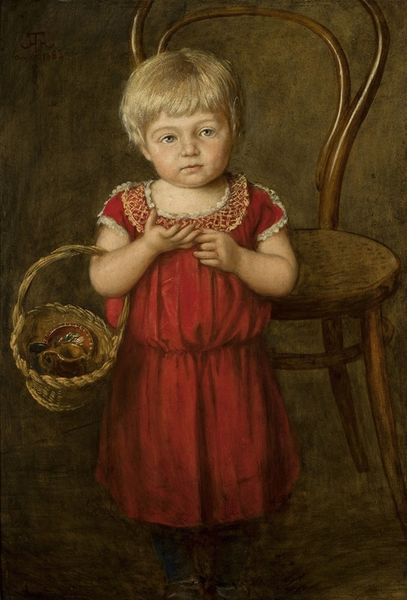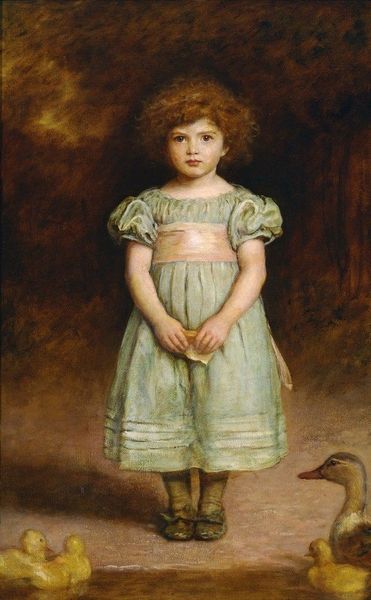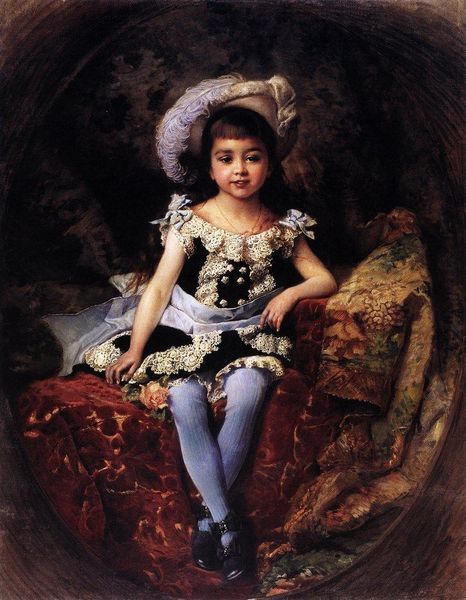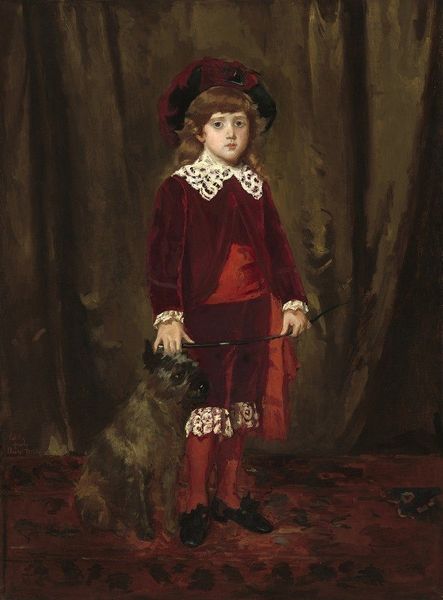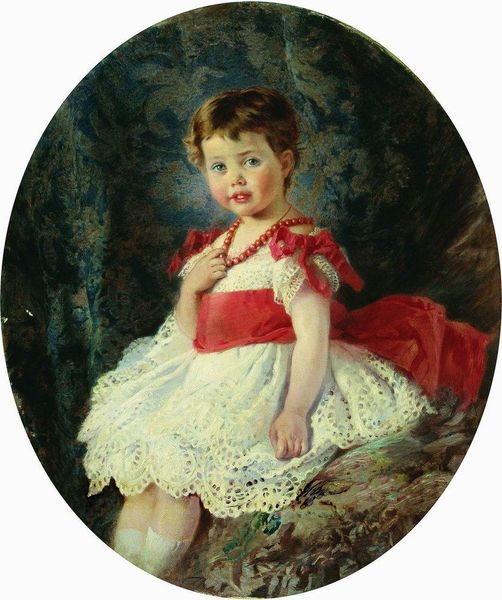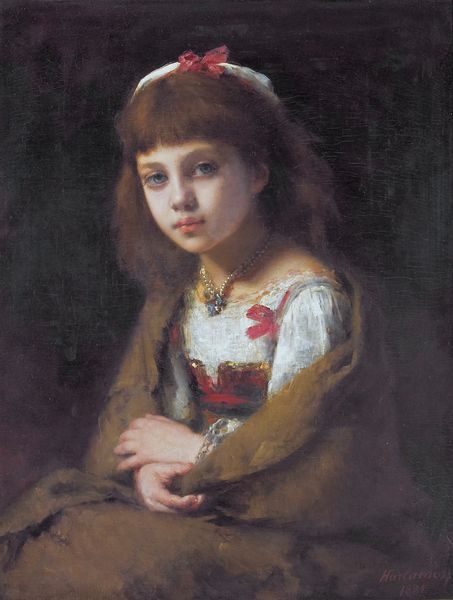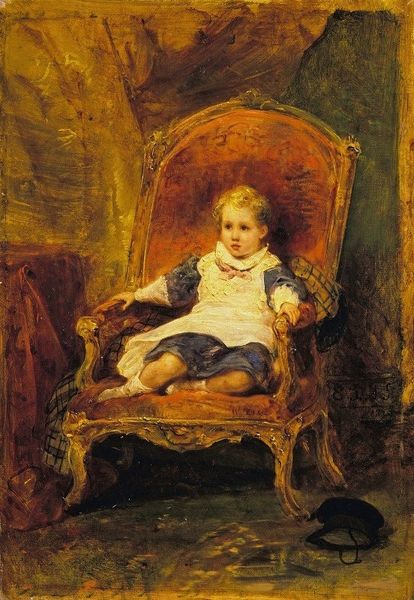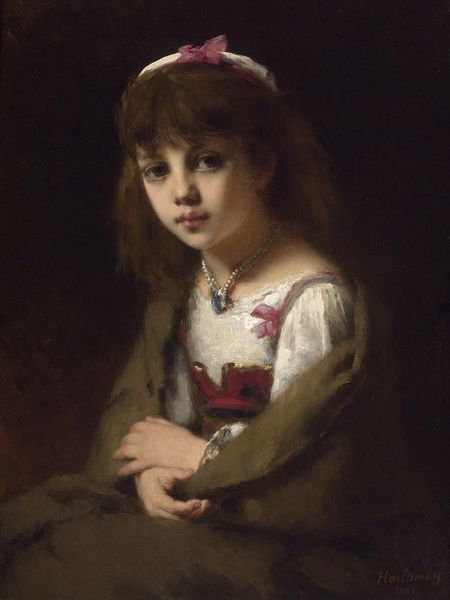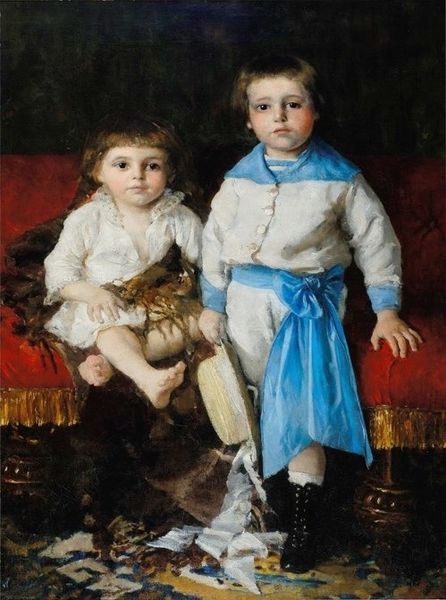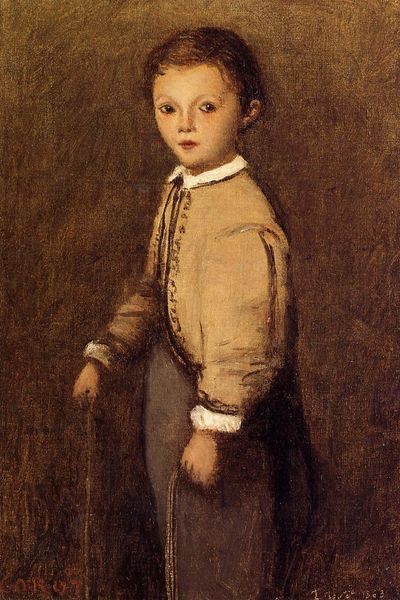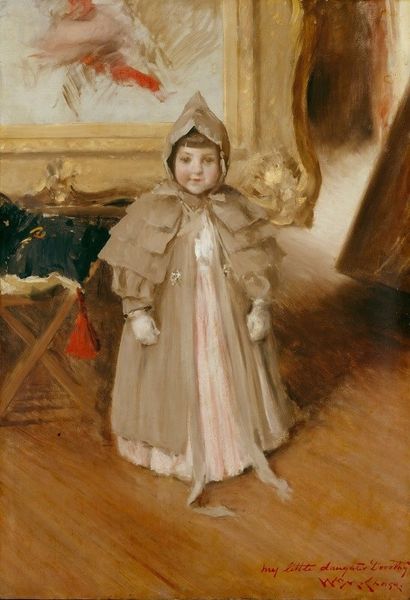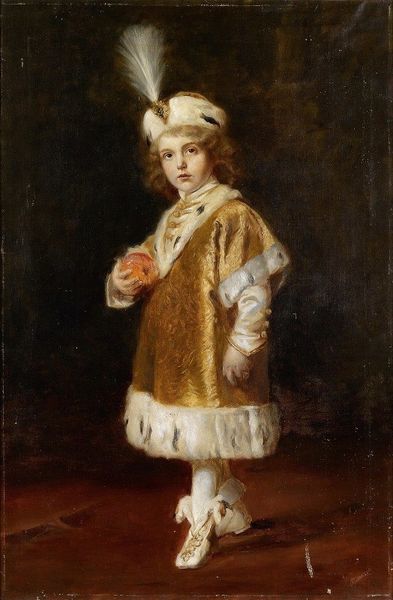
painting, oil-paint
#
portrait
#
figurative
#
painting
#
oil-paint
#
figuration
#
oil painting
#
romanticism
#
academic-art
Copyright: Public Domain: Artvee
Curator: Let’s take a moment to consider this oil painting by Hans Makart titled "Prince Gottfried Zu Hohenlohe-Schillingsfürst." Editor: What a striking, slightly melancholy, portrait of a young boy! He has this piercing gaze that just cuts right through you. And is that… a fur rug he’s standing on? Curator: Yes, the opulence is undeniable, isn't it? There's a real theatricality here. The draped red curtain in the background, the ornate detailing of his apron-like garment, it all speaks to a certain status and perhaps even an attempt to aggrandize this small child. Editor: I notice that there's a strange object beside him, to his left—a mass of pinks and whites atop the draped table... it appears to be meat of some kind. It feels very symbolically loaded. Is that something specific related to the Hohenlohe-Schillingsfürst family, a mark of their lineage? It feels like an offering, almost sacrificial. Curator: It could be. Food often appears as a vanitas symbol, representing earthly indulgence and decay, particularly in memento mori artworks. Though the painting does not have a known creation date, Hans Makart was alive during a time when Romanticism shifted towards Realism, when symbolism began weaving its way into the genre of portraiture. Editor: And the choice of academic art adds to the complexity. Makart wasn’t just painting a portrait; he was consciously constructing an image, laden with meaning that would resonate within certain circles. Look at how he's framed: everything draws your eyes towards him. It’s interesting how such a formal style is used to convey what feels like a really personal vulnerability. Curator: Exactly! It speaks to that Romantic tension between inner experience and outward representation. It asks us to consider the weight of expectation and legacy on someone so young. I also appreciate how this work transcends the specificity of its subject by reflecting broadly on identity and power. Editor: Absolutely, and even on the fleeting nature of it all, if one takes the possible vanitas symbolism to heart. Well, it’s definitely given me much to reflect on. Thanks for shedding light on such a compelling work.
Comments
No comments
Be the first to comment and join the conversation on the ultimate creative platform.
